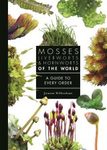About this book
Covering 825 species, more than any comparable field guide, Trees of Eastern North America is the most comprehensive, best illustrated, and easiest-to-use book of its kind. Presenting all the native and naturalized trees of the eastern United States and Canada as far west as the Great Plains – including those species found only in tropical and subtropical Florida and northernmost Canada – Trees of Eastern North America features superior descriptions; thousands of meticulous color paintings by David More that illustrate important visual details; range maps that provide a thumbnail view of distribution for each native species; "Quick ID" summaries; a user-friendly layout; scientific and common names; the latest taxonomy; information on the most recently naturalized species; keys to leaves and twigs; and an introduction to tree identification, forest ecology, and plant classification and structure. The easy-to-read descriptions present details of size, shape, growth habit, bark, leaves, flowers, fruit, flowering and fruiting times, habitat, and range. Using a broad definition of a tree, Trees of Eastern North America covers many small, overlooked species normally thought of as shrubs.
With its unmatched combination of breadth and depth, this is an essential guide for every tree lover. It is the most comprehensive, best illustrated, and easiest-to-use field guide to the trees of eastern North America. It covers 825 species, more than any comparable guide, including all the native and naturalized trees of the United States and Canada as far west as the Great Plains. It features specially commissioned artwork, detailed descriptions, range maps for native species, up-to-date taxonomy and names, and much, much more.
Contents
Introduction 7
About This Book 7
Taxonomy and Names 8
Gymnosperms and Angiosperms 8
Tree Biology 9
Forest Structure 18
Leaf and Twig Keys 19
Winter Twigs of Selected Eastern Trees 20
Key to the Gymnosperms by Leaf Type 25
Key to Selected Angiosperm Trees by Leaf Shape 26
THE TREES
Gymnosperms 34
Conifers 34
Ginkgoaceae: Ginkgo Family 35
Araucariaceae: Araucaria Family 36
Cupressaceae: Cypress Family 38
Pinaceae: Pine Family 51
Taxaceae: Yew Family 78
Angiosperms 80
Monocots 80
Arecaceae: Palm Family 80
Dicots 98
Acanthaceae: Acanthus Family 98
Adoxaceae: Moschatel Family 99
Altingiaceae: Sweetgum Family 106
Anacardiaceae: Cashew Family 108
Annonaceae: Custard Apple Family 118
Apocynaceae: Oleander Family 122
Aquifoliaceae: Holly Family 126
Araliaceae: Ginseng Family 142
Asteraceae: Aster Family 146
Betulaceae: Birch Family 147
Bignoniaceae: Bignonia Family 166
Boraginaceae: Borage Family 174
Burseraceae: Torchwood Family 178
Cactaceae: Cactus Family 180
Canellaceae: Wild Cinnamon Family 180
Cannabaceae: Hemp Family 182
Capparaceae: Caper Family 188
Casuarinaceae: She-oak Family 190
Cecropiaceae: Cecropia Family 192
Celastraceae: Staff Tree Family 193
Cercidiphyllaceae: Katsura Tree Family 202
Chrysobalanaceae: Coco Plum Family 203
Clethraceae: Witch Alder Family 204
Clusiaceae: Garcinia Family 205
Combretaceae: White Mangrove Family 208
Cornaceae: Dogwood Family 214
Cyrillaceae: Titi Family 222
Ebenaceae: Ebony Family 224
Elaeagnaceae: Oleaster Family 226
Ericaceae: Heath Family 228
Euphorbiaceae: Spurge Family 236
Fabaceae: Bean or Pea Family 248
Fagaceae: Beech or Oak Family 294
Hamamelidaceae: Witch-hazel Family 350
Illiciaceae: Star Anise Family 352
Juglandaceae: Walnut Family 353
Lauraceae: Laurel Family 368
Leitneriaceae: Corkwood Family 378
Lythraceae: Loosestrife Family 379
Magnoliaceae: Magnolia Family 380
Malpighiaceae: Malpighia Family 391
Malvaceae: Mallow Family 392
Melastomataceae: Melastome Family 402
Meliaceae: Mahogany Family 403
Moraceae: Mulberry Family 406
Moringaceae: Horseradish-tree Family 418
Muntingiaceae: Muntingia Family 418
Myoporaceae: Myoporum Family 420
Myricaceae: Wax Myrtle Family 420
Myrsinaceae: Myrsine Family 424
Myrtaceae: Myrtle Family 426
Nyctaginaceae: Four-o’clock Family 444
Nyssaceae: Tupelo Family 446
Oleaceae: Olive Family 450
Paulowniaceae: Princesstree Family 466
Picramniaceae: Bitterbush Family 468
Pittosporaceae: Cheesewood Family 469
Platanaceae: Planetree Family 470
Polygonaceae: Buckwheat Family 472
Proteaceae: Protea Family 474
Punicaceae: Pomegranate Family 475
Rhamnaceae: Buckthorn Family 476
Rhizophoraceae: Red Mangrove Family 488
Rosaceae: Rose Family 489
Rubiaceae: Madder Family 562
Rutaceae: Citrus or Rue Family 572
Salicaceae: Willow Family 586
Sapindaceae: Soapberry Family 618
Sapotaceae: Sapodilla Family 646
Schoepfiaceae: Schoepfia Family 658
Simaroubaceae: Quassia Family 659
Solanaceae: Nightshade Family 661
Staphyleaceae: Bladdernut Family 665
Styracaceae: Storax Family 666
Symplocaceae: Sweetleaf Family 670
Tamaricaceae: Tamarisk Family 672
Theaceae: Tea Family 676
Theophrastaceae: Joewood Family 680
Ulmaceae: Elm Family 682
Verbenaceae: Vervain Family 692
Ximeniaceae: Ximenia Family 696
Zygophyllaceae: Caltrop Family 698
Acknowledgments 700
Abbreviations 701
Glossary 702
Index of Species 707
Customer Reviews
Biography
Richard Spellenberg, a botanist and specialist in plant taxonomy, is the author of the National Audubon Society Field Guide to Wildflowers, Western Region and coauthor of the National Wildlife Federation Field Guide to Trees of North America.
Christopher J. Earle is an ecologist whose specialties include forest ecology and conifer biology.
Gil Nelson is a botanist and the coauthor of the National Wildlife Federation Field Guide to Trees of North America and the National Audubon Society Field Guide to the Southeastern States.
David More is regarded as one of the finest botanical illustrators in the world. He has illustrated a number of tree guides, including the acclaimed Collins Tree Guide and The Illustrated Encyclopedia of Trees.



















































